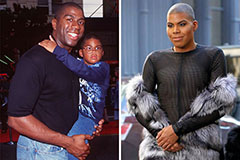Portrait painting is a intriguing art form that seeks to capture the very essence of a subject. Talented artists employ a variety of techniques to convey not only the physical characteristics but also the inner spirit of their models. By means of careful scrutiny and a deep appreciation into human feelings, portrait painters generate works of art that are both lifelike and thought-provoking.
A true portrait is more than just a resemblance; it's a window into the heart of the person being portrayed. Renowned portrait painters over history have left behind a collection of masterpieces that continue to amaze viewers today.
Brushstrokes and Emotion: Unveiling the Soul Through Paint
A painting serves as more than just a visual depiction; it contains a world of emotions waiting to be uncovered. Each stroke of the brush expresses a fragment of the painter's soul, interlacing together rich hues to form an emotional story.
The harshness of a mark can express anger, while the smoothness of a sweep might suggest at peace. Color, too, plays a significant role, triggering a variety of emotions from delight to sorrow.
By analyzing these components, we can embark on a exploration to decode the artist's intentions and, in thereby, gain a deeper insight of the human condition.
Exploring Portraits
A journey into portraiture travels far beyond the mere depiction of a person's physical features. It seeks to capture the soul of a subject, unveiling their inner world. Portraiture becomes a powerful tool for painters to examine the human experience.
From the stroke of a brush or the click of a lens, portraiture allows us to understand with people on a significant level.
Peering into the Soul: Portraits as Windows to History
Portraits reflect the essence of humanity across time. From classical civilizations to the modern era, artists devised their talents to immortalize the human experience in paint, sculpture, and photograph. Each surface becomes a window into the lives, thoughts, and emotions of those who sit.
- Decoding these portraits reveals not only individual stories but also societal norms and cultural shifts. They function as a lasting record of human emotion, allowing us to connect with the past and achieve a deeper insight of our shared legacy.
Eyes on Canvas: Power and Presence in Portraiture
Portraiture has long held the position of a fascinating arena/domain/stage where power and presence are woven together. From the regal countenances/visages/features of monarchs to the unassuming/modest/simple expressions of everyday individuals/persons/folk, each painted gaze offers/presents/reveals a unique window into the dynamics/nuances/complexities of society/human interaction/the human condition.
The artist's/painter's/creator's skill in capturing not only the physical likeness but also the essence/spirit/character of their subject is what truly elevates/transforms/enhances a portrait from a mere depiction/representation/illustration to a powerful statement/reflection/work of art.
Through careful use of composition, light, and color, here artists have employed the painted gaze to convey/communicate/express a range of emotions, from joy to sorrow, and to underscore/highlight/emphasize the status/position/rank of their subjects within society/their world/the hierarchy. A portrait can be a tool for propaganda, reflecting the values/beliefs/ideals of the era in which it was created.
From Realism to Impressionism: The Evolution of Portrait Painting
Portrait painting underwent a dramatic transformation from the strictures of Realism to the free-flowing aesthetics of Impressionism. Realist artists, such as Gustave Courbet and Jean-Auguste-Dominique Ingres, sought to capture the world faithfully, focusing on minute details and a lifelike depiction of their subjects. Their portraits often conveyed a sense of seriousness.
In contrast, Impressionist painters like Edgar Degas and Pierre-Auguste Renoir embraced a more subjective approach. They were less concerned with capturing precise details and instead sought to capture the fleeting effects of light and color. Their portraits are characterized by loose brushstrokes, vibrant hues, and a sense of energy. The shift from Realism to Impressionism reflected a broader cultural change, encouraging new ideas about perception and the role of the artist.
 Bradley Pierce Then & Now!
Bradley Pierce Then & Now! Ashley Johnson Then & Now!
Ashley Johnson Then & Now! Jennifer Love Hewitt Then & Now!
Jennifer Love Hewitt Then & Now! Earvin Johnson III Then & Now!
Earvin Johnson III Then & Now! Morgan Fairchild Then & Now!
Morgan Fairchild Then & Now!